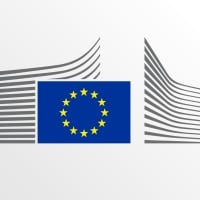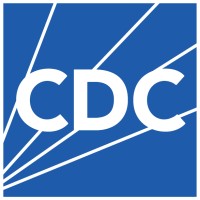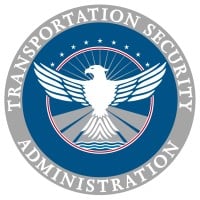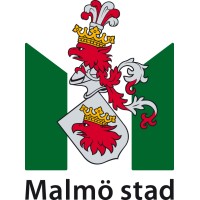
Oregon Department of Transportation Company Cyber Security Posture
oregon.govThe Oregon Department of Transportation is an award-winning organization, more than 4,500 employees strong. Together, we provide a safe and reliable multimodal transportation system that connects people and helps Oregon's communities and economy thrive. Transportation in Oregon is a multi-billion dollar investment in our people, our environment and our state. Almost every aspect of life is affected one way or another by transportation. With 96,000 square miles of land, we must have a safe, dependable system — and in Oregon, that includes highways, passenger and freight rail, public transit and non-motorized transportation. Over the past several years, Oregonians have opted to invest in the state’s transportation infrastructure. This commitment to a sound transportation system is creating opportunities for engineers, planners, maintenance and construction workers, information systems specialists, accountants, customer service representatives, inspectors, policy analysts and other knowledgeable employees. Consider a career with the Oregon Department of Transportation. Live and work among tall mountains, surrounded by sandy ocean beaches and clear blue lakes, in the grassy valleys or on the high desert, in the big city or in a small country town. Oregon has it all — just waiting for you to discover; waiting for you to make your mark. For job opportunities, visit www.odotjobs.com or email [email protected]. For general questions, call (888) ASK-ODOT.
ODT Company Details
oregon-department-of-transportation
1927 employees
18447.0
922
Government Administration
oregon.gov
Scan still pending
ORE_2387723
In-progress
Between 900 and 1000
This score is AI-generated and less favored by cyber insurers, who prefer the TPRM score.
 ODT Global Score
ODT Global Score.png)

Oregon Department of Transportation Company Scoring based on AI Models
| Model Name | Date | Description | Current Score Difference | Score |
|---|---|---|---|---|
| AVERAGE-Industry | 03-12-2025 | This score represents the average cybersecurity rating of companies already scanned within the same industry. It provides a benchmark to compare an individual company's security posture against its industry peers. | N/A | Between 900 and 1000 |
Oregon Department of Transportation Company Cyber Security News & History
| Entity | Type | Severity | Impact | Seen | Url ID | Details | View |
|---|---|---|---|---|---|---|---|
| Oregon Department of Transportation | Breach | 100 | 4 | 06/2023 | ORE61425623 | Link | |
Rankiteo Explanation : Attack with significant impact with customers data leaksDescription: Millions of drivers and car owners had their personal information taken as a result of the MOVEit breach, including the departments of motor vehicles in Louisiana and Oregon. The company was hacked, exposing information from an estimated 3.5 million identity cards and driver's licences. Given that many people's personal information was exposed to potential unscrupulous actors, the Oregon DMV data breach could be risky for them. As of right now, there is no evidence that the MOVEit hacker group sold, exchanged, or publicly publicised the OMV information they stole. | |||||||
| Oregon Department of Transportation | Ransomware | 100 | 5 | 11/2023 | ORE45181223 | Link | |
Rankiteo Explanation : Attack threatening the organization’s existenceDescription: The MOVEit Transfer file transfer platform, created by Progress Software Corporation, was the subject of a recent, major hacking effort by the Cl0p ransomware group, according to alarming information disclosed by cybersecurity firm Emsisoft. The analysts estimate that 60,144,069 people and about 1,000 organisations were affected by the attacks. The Cl0p group's leak site, state breach reports, SEC filings, and other public disclosures are the sources of the data. The attacks affected tens of millions of people, according to the experts. Maximus, Pôle emploi, Louisiana Office of Motor Vehicles, Colorado Department of Health Care Policy and Financing, Oregon Department of Transportation, Teachers Insurance and Annuity Association of America, Genworth, PH Tech, and Milliman Solutions are the organisations with the greatest number of affected persons. | |||||||
Oregon Department of Transportation Company Subsidiaries

The Oregon Department of Transportation is an award-winning organization, more than 4,500 employees strong. Together, we provide a safe and reliable multimodal transportation system that connects people and helps Oregon's communities and economy thrive. Transportation in Oregon is a multi-billion dollar investment in our people, our environment and our state. Almost every aspect of life is affected one way or another by transportation. With 96,000 square miles of land, we must have a safe, dependable system — and in Oregon, that includes highways, passenger and freight rail, public transit and non-motorized transportation. Over the past several years, Oregonians have opted to invest in the state’s transportation infrastructure. This commitment to a sound transportation system is creating opportunities for engineers, planners, maintenance and construction workers, information systems specialists, accountants, customer service representatives, inspectors, policy analysts and other knowledgeable employees. Consider a career with the Oregon Department of Transportation. Live and work among tall mountains, surrounded by sandy ocean beaches and clear blue lakes, in the grassy valleys or on the high desert, in the big city or in a small country town. Oregon has it all — just waiting for you to discover; waiting for you to make your mark. For job opportunities, visit www.odotjobs.com or email [email protected]. For general questions, call (888) ASK-ODOT.
Access Data Using Our API

Get company history
.png)
ODT Cyber Security News
Cyber Attack Impacting Oregon Environmental Department
The Oregon Department of Environmental Quality has reported a cyber attack that is affecting communications and operations including vehicle ...
Text scammers posing as Oregon DMV claim you owe them a toll. You don't.
Scammers are posing as the Oregon DMV and texting cell phones about unpaid toll fees. The messages vary, but essentially claim you have a past due toll balance.
Q4 2024 NEVI quarterly update
Now, there are 126 public charging ports in operation across 31 NEVI stations in nine states, resulting in an 83% increase in open NEVI ports ...
Oregon DEQ Conducts Forensic Investigation in Cyber Attack
The state Department of Environmental Quality is probing a cyber attack nearly a month ago. An outside contractor is assisting in a digital ...
How the Oregon Department of Transportation Is Reaching Top Talent
ODOT Chief Content Strategist Sally Ridenour spoke about ways she and her team work to attract qualified candidates and fill open roles with top talent.
Indicted pair of foreign nationals were behind swatting attack on CISA director
Two European men who allegedly carried a “swatting” campaign targeting U.S. lawmakers and others were responsible for the attack on the head ...
Massive data breach impacts 90% of Oregonians’ drivers licenses, state IDs
The identities of approximately 3.5 million Oregonians are at risk after a data breach of the Oregon Department of Transportation left ...
3.5 million Oregonians potentially impacted by DMV data breach
The data breach impacts 3.5 million Oregonians with driver's licenses or ID cards.
CrowdStrike’s Massive Global Tech Outage: Here’s What’s Been Affected
CrowdStrike, a widely used cybersecurity firm, took responsibility for the massive global outage on Friday, a disruption that shut down systems ...

ODT Similar Companies

U.S. Department of Veterans Affairs
Welcome to the United States Department of Veterans Affairs (VA) Official LinkedIn page. We're recruiting the finest employees to care for our #Veterans. Following/engagement ≠ signify VA endorsement. This is a moderated page, meaning that all comments will be reviewed for appropriate content. Ple

European Commission
The Commission represents and upholds the interests of the EU as a whole, and is independent of national governments. The European Commission prepares legislation for adoption by the Council (representing the member countries) and the Parliament (representing the citizens). It administers the budge

Centers for Disease Control and Prevention
CDC works 24/7 keeping America safe from health, safety and security threats, both foreign and domestic. Whether diseases start at home or abroad, are chronic or acute, curable or preventable, human error or deliberate attack, CDC fights it and supports communities and citizens to prevent it. CDC is

Transportation Security Administration (TSA)
The Transportation Security Administration (TSA) is a component agency of the U.S. Department of Homeland Security (DHS), committed to securing the nation’s transportation systems to ensure safe and efficient travel for all. Our mission is to protect the American people by preventing threats and dis

Cebu City Government
Cebu City is located on the central eastern part of Cebu Province, an island at the center of the Visayas in Southern Philippines. As defined by the Bureau of Land Location Monument (BLLM) No. 1, Cebu Cadastral Survey, it is 10 degrees 17 minutes North Latitude and 123 degrees 54 minutes East Longit

Malmö stad
Bli en samhällsbyggare – jobba i Malmö stad! Genom att arbeta i Malmö stad får du möjlighet att arbeta med hållbar samhällsutveckling. Som en samhällsbyggare spelar du en viktig roll i Malmös utveckling och därför ser vi oss som framtidens arbetsplats. Människors lika värde är en förutsättning fö

Frequently Asked Questions (FAQ) on Cybersecurity Incidents
ODT CyberSecurity History Information
Total Incidents: According to Rankiteo, ODT has faced 2 incidents in the past.
Incident Types: The types of cybersecurity incidents that have occurred include ['Ransomware', 'Breach'].
Total Financial Loss: The total financial loss from these incidents is estimated to be {total_financial_loss}.
Cybersecurity Posture: The company's overall cybersecurity posture is described as The Oregon Department of Transportation is an award-winning organization, more than 4,500 employees strong. Together, we provide a safe and reliable multimodal transportation system that connects people and helps Oregon's communities and economy thrive. Transportation in Oregon is a multi-billion dollar investment in our people, our environment and our state. Almost every aspect of life is affected one way or another by transportation. With 96,000 square miles of land, we must have a safe, dependable system — and in Oregon, that includes highways, passenger and freight rail, public transit and non-motorized transportation. Over the past several years, Oregonians have opted to invest in the state’s transportation infrastructure. This commitment to a sound transportation system is creating opportunities for engineers, planners, maintenance and construction workers, information systems specialists, accountants, customer service representatives, inspectors, policy analysts and other knowledgeable employees. Consider a career with the Oregon Department of Transportation. Live and work among tall mountains, surrounded by sandy ocean beaches and clear blue lakes, in the grassy valleys or on the high desert, in the big city or in a small country town. Oregon has it all — just waiting for you to discover; waiting for you to make your mark. For job opportunities, visit www.odotjobs.com or email [email protected]. For general questions, call (888) ASK-ODOT..
Detection and Response: The company detects and responds to cybersecurity incidents through {description_of_detection_and_response_process}.
Incident Details
Incident 1: Ransomware Attack
Title: {Incident_Title}
Description: {Brief_description_of_the_incident}
Date Detected: {Detection_Date}
Date Publicly Disclosed: {Disclosure_Date}
Date Resolved: {Resolution_Date}
Type: {Type_of_Attack}
Attack Vector: {Attack_Vector}
Vulnerability Exploited: {Vulnerability}
Threat Actor: {Threat_Actor}
Motivation: {Motivation}
Incident 2: Data Breach
Title: {Incident_Title}
Description: {Brief_description_of_the_incident}
Date Detected: {Detection_Date}
Date Publicly Disclosed: {Disclosure_Date}
Date Resolved: {Resolution_Date}
Type: {Type_of_Attack}
Attack Vector: {Attack_Vector}
Vulnerability Exploited: {Vulnerability}
Threat Actor: {Threat_Actor}
Motivation: {Motivation}
Common Attack Types: As of now, the company has not encountered any reported incidents involving common cyberattacks.
Identification of Attack Vectors: The company identifies the attack vectors used in incidents through {description_of_identification_process}.
Impact of the Incidents
Incident 1: Ransomware Attack
Financial Loss: {Financial_Loss}
Data Compromised: {Data_Compromised}
Systems Affected: {Systems_Affected}
Downtime: {Downtime}
Operational Impact: {Operational_Impact}
Conversion Rate Impact: {Conversion_Rate_Impact}
Revenue Loss: {Revenue_Loss}
Customer Complaints: {Customer_Complaints}
Brand Reputation Impact: {Brand_Reputation_Impact}
Legal Liabilities: {Legal_Liabilities}
Identity Theft Risk: {Identity_Theft_Risk}
Payment Information Risk: {Payment_Information_Risk}
Incident 2: Data Breach
Financial Loss: {Financial_Loss}
Data Compromised: {Data_Compromised}
Systems Affected: {Systems_Affected}
Downtime: {Downtime}
Operational Impact: {Operational_Impact}
Conversion Rate Impact: {Conversion_Rate_Impact}
Revenue Loss: {Revenue_Loss}
Customer Complaints: {Customer_Complaints}
Brand Reputation Impact: {Brand_Reputation_Impact}
Legal Liabilities: {Legal_Liabilities}
Identity Theft Risk: {Identity_Theft_Risk}
Payment Information Risk: {Payment_Information_Risk}
Average Financial Loss: The average financial loss per incident is {average_financial_loss}.
Commonly Compromised Data Types: The types of data most commonly compromised in incidents are {list_of_commonly_compromised_data_types}.
Incident 1: Ransomware Attack
Entity Name: {Entity_Name}
Entity Type: {Entity_Type}
Industry: {Industry}
Location: {Location}
Size: {Size}
Customers Affected: {Customers_Affected}
Incident 2: Data Breach
Entity Name: {Entity_Name}
Entity Type: {Entity_Type}
Industry: {Industry}
Location: {Location}
Size: {Size}
Customers Affected: {Customers_Affected}
Response to the Incidents
Incident 1: Ransomware Attack
Incident Response Plan Activated: {Yes/No}
Third Party Assistance: {Yes/No}
Law Enforcement Notified: {Yes/No}
Containment Measures: {Containment_Measures}
Remediation Measures: {Remediation_Measures}
Recovery Measures: {Recovery_Measures}
Communication Strategy: {Communication_Strategy}
Adaptive Behavioral WAF: {Adaptive_Behavioral_WAF}
On-Demand Scrubbing Services: {On_Demand_Scrubbing_Services}
Network Segmentation: {Network_Segmentation}
Enhanced Monitoring: {Enhanced_Monitoring}
Incident 2: Data Breach
Incident Response Plan Activated: {Yes/No}
Third Party Assistance: {Yes/No}
Law Enforcement Notified: {Yes/No}
Containment Measures: {Containment_Measures}
Remediation Measures: {Remediation_Measures}
Recovery Measures: {Recovery_Measures}
Communication Strategy: {Communication_Strategy}
Adaptive Behavioral WAF: {Adaptive_Behavioral_WAF}
On-Demand Scrubbing Services: {On_Demand_Scrubbing_Services}
Network Segmentation: {Network_Segmentation}
Enhanced Monitoring: {Enhanced_Monitoring}
Incident Response Plan: The company's incident response plan is described as {description_of_incident_response_plan}.
Third-Party Assistance: The company involves third-party assistance in incident response through {description_of_third_party_involvement}.
Data Breach Information
Incident 2: Data Breach
Type of Data Compromised: {Type_of_Data}
Number of Records Exposed: {Number_of_Records}
Sensitivity of Data: {Sensitivity_of_Data}
Data Exfiltration: {Yes/No}
Data Encryption: {Yes/No}
File Types Exposed: {File_Types}
Personally Identifiable Information: {Yes/No}
Prevention of Data Exfiltration: The company takes the following measures to prevent data exfiltration: {description_of_prevention_measures}.
Handling of PII Incidents: The company handles incidents involving personally identifiable information (PII) through {description_of_handling_process}.
Ransomware Information
Incident 1: Ransomware Attack
Ransom Demanded: {Ransom_Amount}
Ransom Paid: {Ransom_Paid}
Ransomware Strain: {Ransomware_Strain}
Data Encryption: {Yes/No}
Data Exfiltration: {Yes/No}
Ransom Payment Policy: The company's policy on paying ransoms in ransomware incidents is described as {description_of_ransom_payment_policy}.
Data Recovery from Ransomware: The company recovers data encrypted by ransomware through {description_of_data_recovery_process}.
Regulatory Compliance
Incident 1: Ransomware Attack
Regulations Violated: {Regulations_Violated}
Fines Imposed: {Fines_Imposed}
Legal Actions: {Legal_Actions}
Regulatory Notifications: {Regulatory_Notifications}
Incident 2: Data Breach
Regulations Violated: {Regulations_Violated}
Fines Imposed: {Fines_Imposed}
Legal Actions: {Legal_Actions}
Regulatory Notifications: {Regulatory_Notifications}
Regulatory Frameworks: The company complies with the following regulatory frameworks regarding cybersecurity: {list_of_regulatory_frameworks}.
Ensuring Regulatory Compliance: The company ensures compliance with regulatory requirements through {description_of_compliance_measures}.
Lessons Learned and Recommendations
Incident 1: Ransomware Attack
Lessons Learned: {Lessons_Learned}
Incident 2: Data Breach
Lessons Learned: {Lessons_Learned}
Incident 1: Ransomware Attack
Recommendations: {Recommendations}
Incident 2: Data Breach
Recommendations: {Recommendations}
Key Lessons Learned: The key lessons learned from past incidents are {list_of_key_lessons_learned}.
Implemented Recommendations: The company has implemented the following recommendations to improve cybersecurity: {list_of_implemented_recommendations}.
References
Additional Resources: Stakeholders can find additional resources on cybersecurity best practices at {list_of_additional_resources}.
Investigation Status
Incident 1: Ransomware Attack
Investigation Status: {Investigation_Status}
Incident 2: Data Breach
Investigation Status: {Investigation_Status}
Communication of Investigation Status: The company communicates the status of incident investigations to stakeholders through {description_of_communication_process}.
Stakeholder and Customer Advisories
Incident 1: Ransomware Attack
Stakeholder Advisories: {Stakeholder_Advisories}
Customer Advisories: {Customer_Advisories}
Incident 2: Data Breach
Stakeholder Advisories: {Stakeholder_Advisories}
Customer Advisories: {Customer_Advisories}
Advisories Provided: The company provides the following advisories to stakeholders and customers following an incident: {description_of_advisories_provided}.
Initial Access Broker
Incident 1: Ransomware Attack
Entry Point: {Entry_Point}
Reconnaissance Period: {Reconnaissance_Period}
Backdoors Established: {Backdoors_Established}
High Value Targets: {High_Value_Targets}
Data Sold on Dark Web: {Yes/No}
Incident 2: Data Breach
Entry Point: {Entry_Point}
Reconnaissance Period: {Reconnaissance_Period}
Backdoors Established: {Backdoors_Established}
High Value Targets: {High_Value_Targets}
Data Sold on Dark Web: {Yes/No}
Monitoring and Mitigation of Initial Access Brokers: The company monitors and mitigates the activities of initial access brokers through {description_of_monitoring_and_mitigation_measures}.
Post-Incident Analysis
Incident 1: Ransomware Attack
Root Causes: {Root_Causes}
Corrective Actions: {Corrective_Actions}
Incident 2: Data Breach
Root Causes: {Root_Causes}
Corrective Actions: {Corrective_Actions}
Post-Incident Analysis Process: The company's process for conducting post-incident analysis is described as {description_of_post_incident_analysis_process}.
Corrective Actions Taken: The company has taken the following corrective actions based on post-incident analysis: {list_of_corrective_actions_taken}.
Additional Questions
General Information
Ransom Payment History: The company has {paid/not_paid} ransoms in the past.
Last Ransom Demanded: The amount of the last ransom demanded was {last_ransom_amount}.
Last Attacking Group: The attacking group in the last incident was {last_attacking_group}.
Incident Details
Most Recent Incident Detected: The most recent incident detected was on {most_recent_incident_detected_date}.
Most Recent Incident Publicly Disclosed: The most recent incident publicly disclosed was on {most_recent_incident_publicly_disclosed_date}.
Most Recent Incident Resolved: The most recent incident resolved was on {most_recent_incident_resolved_date}.
Impact of the Incidents
Highest Financial Loss: The highest financial loss from an incident was {highest_financial_loss}.
Most Significant Data Compromised: The most significant data compromised in an incident was {most_significant_data_compromised}.
Most Significant System Affected: The most significant system affected in an incident was {most_significant_system_affected}.
Response to the Incidents
Third-Party Assistance in Most Recent Incident: The third-party assistance involved in the most recent incident was {third_party_assistance_in_most_recent_incident}.
Containment Measures in Most Recent Incident: The containment measures taken in the most recent incident were {containment_measures_in_most_recent_incident}.
Data Breach Information
Most Sensitive Data Compromised: The most sensitive data compromised in a breach was {most_sensitive_data_compromised}.
Number of Records Exposed: The number of records exposed in the most significant breach was {number_of_records_exposed}.
Ransomware Information
Highest Ransom Demanded: The highest ransom demanded in a ransomware incident was {highest_ransom_demanded}.
Highest Ransom Paid: The highest ransom paid in a ransomware incident was {highest_ransom_paid}.
Regulatory Compliance
Highest Fine Imposed: The highest fine imposed for a regulatory violation was {highest_fine_imposed}.
Most Significant Legal Action: The most significant legal action taken for a regulatory violation was {most_significant_legal_action}.
Lessons Learned and Recommendations
Most Significant Lesson Learned: The most significant lesson learned from past incidents was {most_significant_lesson_learned}.
Most Significant Recommendation Implemented: The most significant recommendation implemented to improve cybersecurity was {most_significant_recommendation_implemented}.
References
Most Recent Source: The most recent source of information about an incident is {most_recent_source}.
Most Recent URL for Additional Resources: The most recent URL for additional resources on cybersecurity best practices is {most_recent_url}.
Investigation Status
Current Status of Most Recent Investigation: The current status of the most recent investigation is {current_status_of_most_recent_investigation}.
Stakeholder and Customer Advisories
Most Recent Stakeholder Advisory: The most recent stakeholder advisory issued was {most_recent_stakeholder_advisory}.
Most Recent Customer Advisory: The most recent customer advisory issued was {most_recent_customer_advisory}.
Initial Access Broker
Most Recent Entry Point: The most recent entry point used by an initial access broker was {most_recent_entry_point}.
Most Recent Reconnaissance Period: The most recent reconnaissance period for an incident was {most_recent_reconnaissance_period}.
Post-Incident Analysis
Most Significant Root Cause: The most significant root cause identified in post-incident analysis was {most_significant_root_cause}.
Most Significant Corrective Action: The most significant corrective action taken based on post-incident analysis was {most_significant_corrective_action}.
What Do We Measure?
















Every week, Rankiteo analyzes billions of signals to give organizations a sharper, faster view of emerging risks. With deeper, more actionable intelligence at their fingertips, security teams can outpace threat actors, respond instantly to Zero-Day attacks, and dramatically shrink their risk exposure window.
These are some of the factors we use to calculate the overall score:
Identify exposed access points, detect misconfigured SSL certificates, and uncover vulnerabilities across the network infrastructure.
Gain visibility into the software components used within an organization to detect vulnerabilities, manage risk, and ensure supply chain security.
Monitor and manage all IT assets and their configurations to ensure accurate, real-time visibility across the company's technology environment.
Leverage real-time insights on active threats, malware campaigns, and emerging vulnerabilities to proactively defend against evolving cyberattacks.




